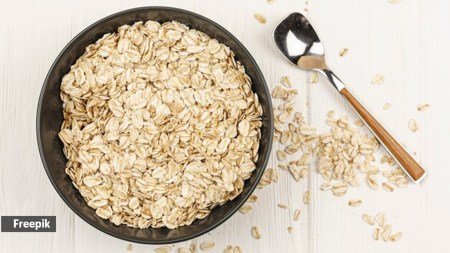This unexpected ingredient helps keep grated cheese fresh and clump-free
Have you ever wondered why pre-grated cheese doesn’t stick together in the bag? It turns out that the secret ingredient behind this is an added substance called cellulose.
In a post on Instagram, Levi Jense mentions, “Cellulose is made from wood pulp and is added to grated, packaged cheese as an anti-caking agent. This means it is used to prevent your shredded cheese from clumping in the bag.”

View this post on Instagram
A post shared by Levi Jensen (@emilyxlevi)
A natural substance found in plants and trees, cellulose is commonly used in the food industry as a food additive. Even though it is considered safe for consumption, many have still questioned its health implications and the safe amounts that should be consumed.
Ipsita Chakraborty, senior nutritionist at Hungry Koala elaborates, “Cellulose is added to prevent the shreds of cheese from clumping together in the packaging by absorbing moisture and providing a barrier between pieces. This extends the shelf life and maintains the desired texture of the product.”
Other anti-caking agents, she informs, used in the food industry include starches, like potato or cornstarch, and silicon dioxide. These alternatives also perform well in absorbing excess moisture and preventing clumping. Manufacturers may choose one over another based on cost, desired texture, and consumer preference regarding ingredient sourcing and natural labeling.
Health implications of consuming cellulose
“Cellulose is generally recognised as safe (GRAS) by the FDA when used in food,” Chakraborty remarks. It is a non-digestible plant fibre, she says, which means it passes through the human digestive system without being broken down. It can aid in digestion by contributing to bulk in the diet.
There are no significant health risks associated with the regular consumption of cellulose in food products like grated cheese. It does not contribute calories or interact chemically with other components of the diet.
However, like any dietary fibre, Chakraborty reminds that excessive intake in a short period might lead to minor gastrointestinal symptoms such as bloating or gas, especially for individuals not accustomed to high-fibre diets.
 Freshly grated cheese typically offers a richer flavour and moist texture (Source: Freepik)
Freshly grated cheese typically offers a richer flavour and moist texture (Source: Freepik)
Should you wash your pre-grated cheese?
“Cleansing pre-grated cheese is generally not recommended or necessary. From a nutritional science perspective, pre-grated cheese is treated with anti-caking agents like cellulose to prevent clumping, preserve freshness, and maintain safety during storage,” Chakraborty reveals. These additives are considered safe for consumption and are approved by food safety authorities. Washing the cheese could remove these agents, she adds, leading to moisture retention that promotes bacterial growth, ultimately compromising both the texture and safety of the cheese. Instead, consumers should focus on proper storage and handling to maintain the quality and safety of pre-grated cheese.
Guidelines for cellulose content in food
The FDA has set guidelines for the acceptable levels of cellulose in various food products, including dairy products like cheese. “Typically, cellulose content in food products can range from 2% to 4% by weight. These limits ensure that the addition of cellulose does not adversely affect the nutritional quality or safety of the food,” she says.
Any addition of cellulose to food products, Chakraborty stresses, must be clearly labelled on the ingredients list of the packaging, allowing consumers to make informed dietary choices based on their preferences or dietary restrictions.
Comparing pre-grated cheese with cellulose to freshly grated cheese
There are some key differences in quality and safety of pre-grated cheese containing cellulose versus freshly grated cheese. According to Chakraborty, some factors that should consumers consider when making a choice between the two are:
Quality differences
Freshly grated cheese typically offers a richer flavour and moist texture compared to pre-grated products, as it lacks added preservatives or anti-caking agents. The absence of cellulose and other additives can make freshly grated cheese more appealing to those preferring all-natural ingredients.
Safety and consumer considerations
While both pre-grated and freshly grated cheeses are safe to consume, the choice often comes down to convenience versus culinary preference. Pre-grated cheese offers convenience and a longer shelf life, beneficial for busy lifestyles. However, consumers looking for the freshest taste and minimal processing might opt for freshly grated cheese.
Decision factors
When choosing between the two, consumers should consider their dietary fiber needs, any sensitivity to food additives, and their personal preference for taste and texture. Checking the label for cellulose content and other additives can help inform this decision, ensuring alignment with health goals and dietary standards.
Disclaimer: The copyright of this article belongs to the original author. Reposting this article is solely for the purpose of information dissemination and does not constitute any investment advice. If there is any infringement, please contact us immediately. We will make corrections or deletions as necessary. Thank you.





